This Vegan Kimchi is made by combining cabbage, radish, spring onions, garlic, ginger, and chili, then allowing them to ferment for up to one week. Perfect for anyone looking to learn how to make vegan kimchi at home, this recipe results in a tangy, spicy dish packed with beneficial bacteria, essential nutrients, and bold flavor.
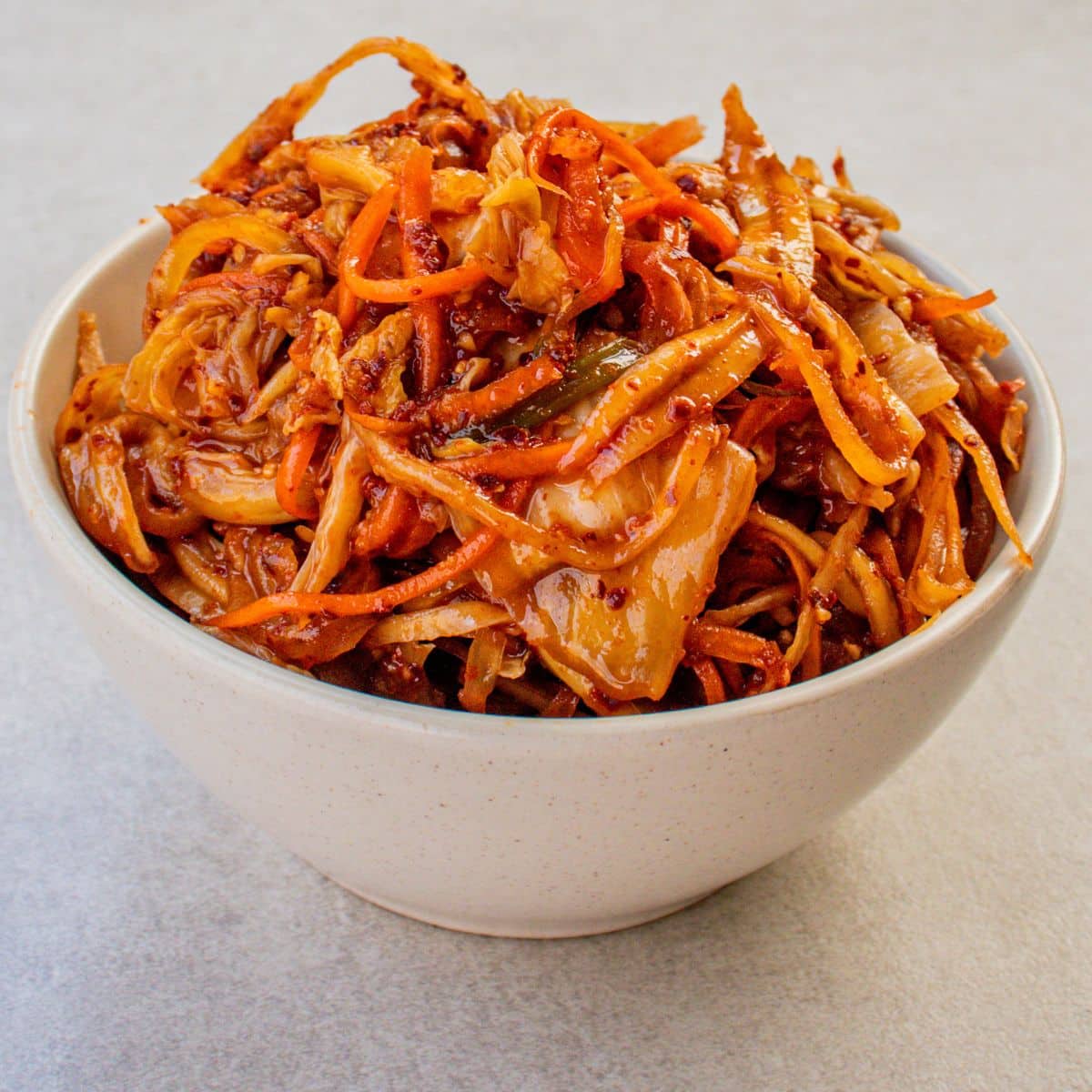
Index
Jump to:
My first taste of kimchi
My first encounter with kimchi was a memorable experience during a trip to Seoul, South Korea in 2008. I was part of The French Laundry culinary team, which cooked at a prestigious food festival with chefs Corey Lee and Sung Jae. That week was a whirlwind of Korean cuisine and culture. From dining at some of Seoul's top restaurants to late-night karaoke sessions, I got deeply immersed in the city's vibrant atmosphere.
It was in the staff canteen of the hotel where we were hosting our events that I had my first taste of kimchi. The tangy spicy kick was unlike anything I'd ever tasted. At first, it was intense, but over time, my taste buds adjusted, and I came to love the distinctive flavors. In Korea, kimchi is more than just a dish - it's a cultural staple served with almost every meal, in endless variations.
Inspired by that unforgettable experience, I'm thrilled to share a plant-based take on this iconic dish that captures the essence of traditional kimchi.
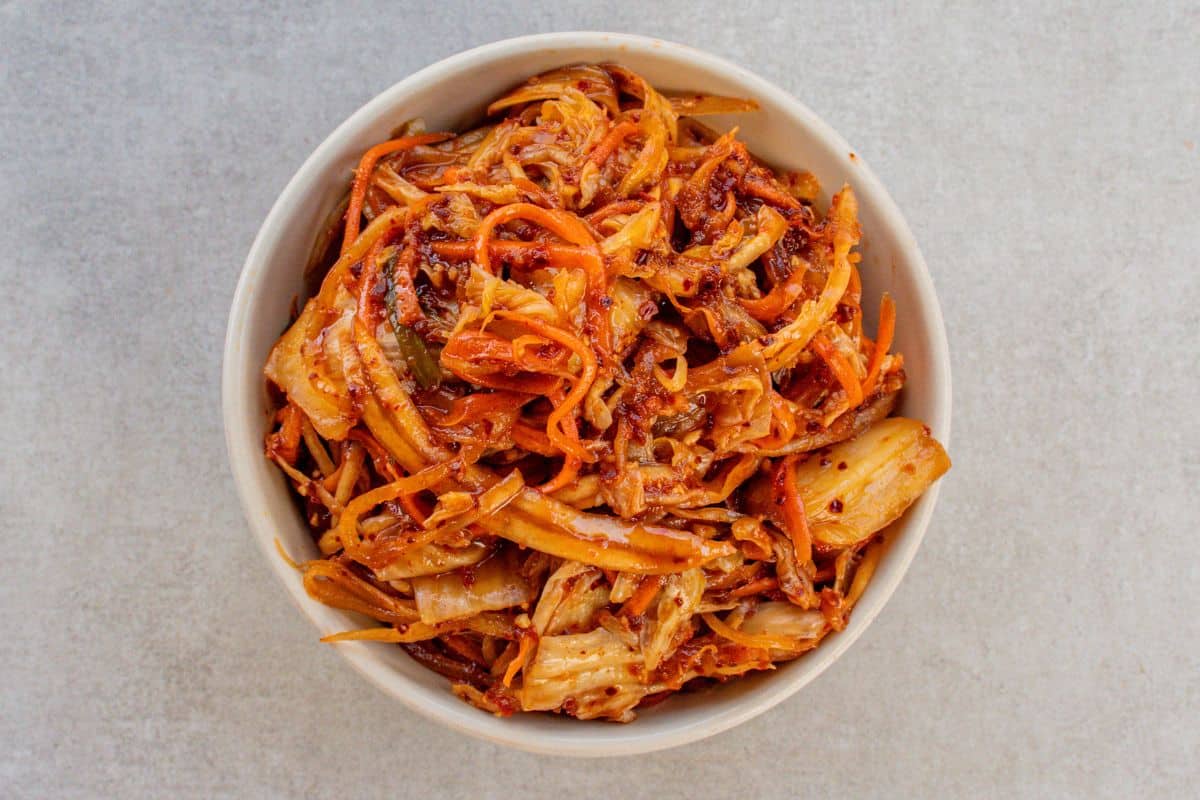
What is vegan kimchi?
Kimchi is a traditional Korean dish made by fermenting vegetables with spices and seasonings. While traditional kimchi often contains fish sauce or shrimp paste, vegan kimchi replaces these ingredients with alternatives like soy sauce, tamari, or seaweed to achieve a similar depth of umami flavor.
The core ingredients - napa cabbage, radish, garlic, ginger, and chili flakes - remain the same, preserving the bold, tangy, and spicy flavor profile. Vegan kimchi is a cruelty-free alternative that stays true to the rich culinary traditions of Korea while offering a gut-friendly, plant-based option for everyone to enjoy.
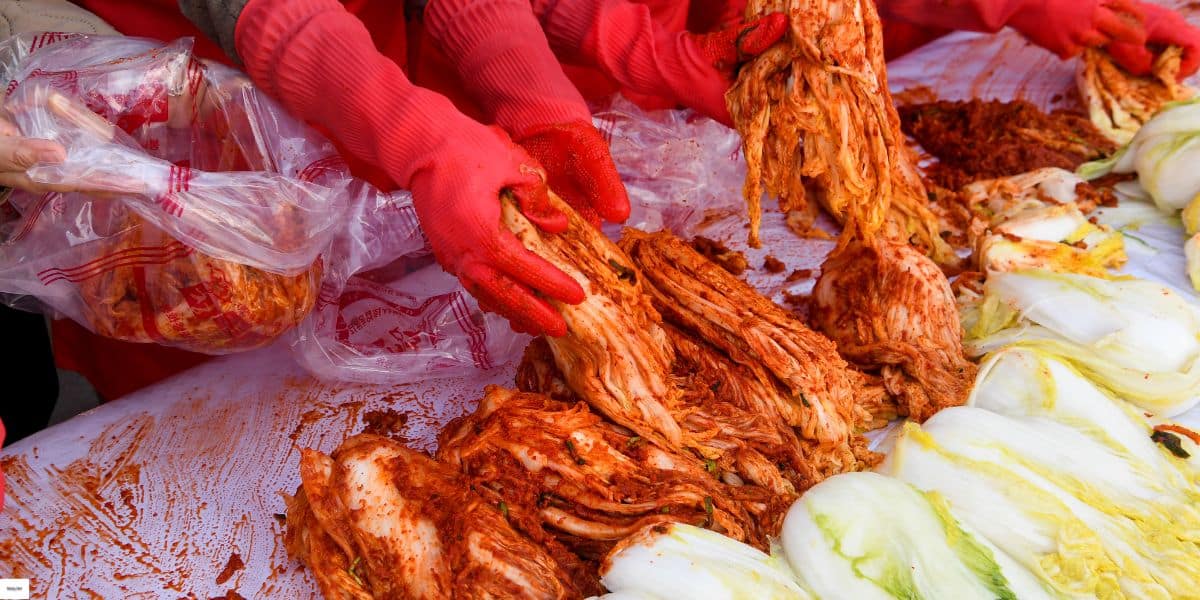
A brief history of kimchi
Kimchi has a history as rich as its flavor, dating back thousands of years to ancient Korea. Initially, it was a practical way to preserve vegetables during harsh winters, with early versions consisting of simple salted vegetables. Over time, ingredients and techniques evolved, particularly after the introduction of chili peppers from the Americas in the 16th century, which gave kimchi its signature heat and vibrancy.
Today, kimchi is a cornerstone of Korean cuisine, with hundreds of regional and seasonal variations. From mild, non-spicy versions like baek-kimchi (white kimchi) to fiery, fermented varieties, every type tells a story of local traditions and flavors. Its evolution highlights its enduring significance in Korean culture and its versatility as a global culinary icon.
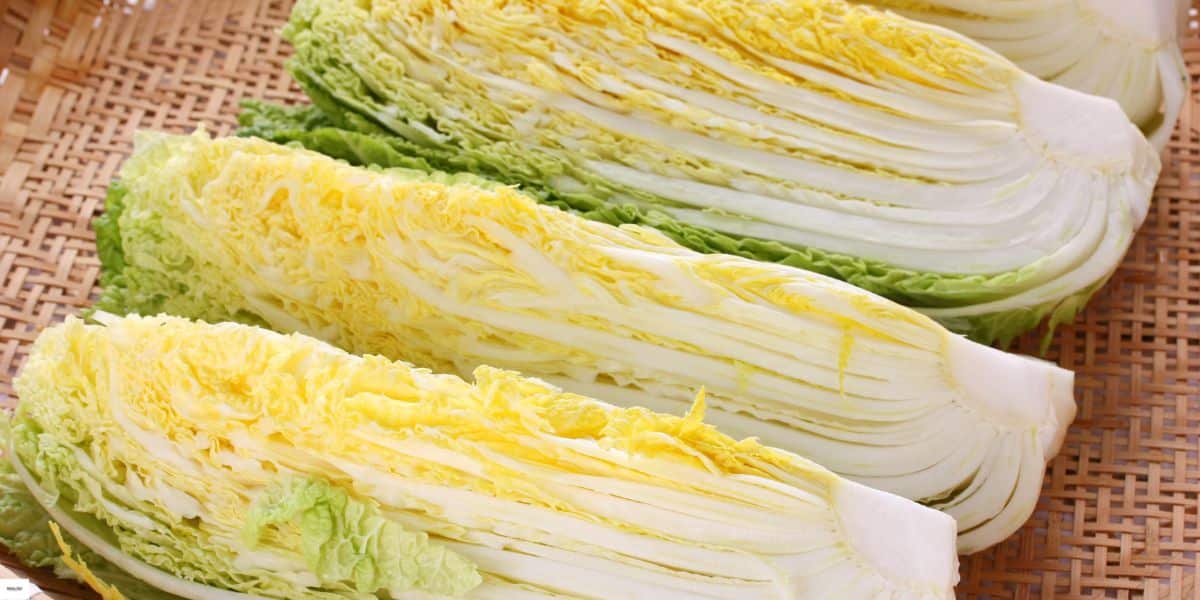
Nutritional content of vegan kimchi
Vegan kimchi isn't just delicious - it's a nutritional powerhouse. Its high probiotic content promotes a healthy gut microbiome, which is linked to improved digestion, enhanced immune function, and reduced inflammation. The fermentation process also increases the bioavailability of nutrients, making it easier for the body to absorb key vitamins and minerals.
Kimchi is a great source of vitamin C, which boosts immunity and supports skin health, as well as vitamin K, essential for bone health and proper blood clotting. It's also rich in potassium, which helps regulate blood pressure and supports muscle and nerve function. With its low-calorie content and high nutrient density, vegan kimchi is a fantastic way to add flavor and health benefits to your meals.
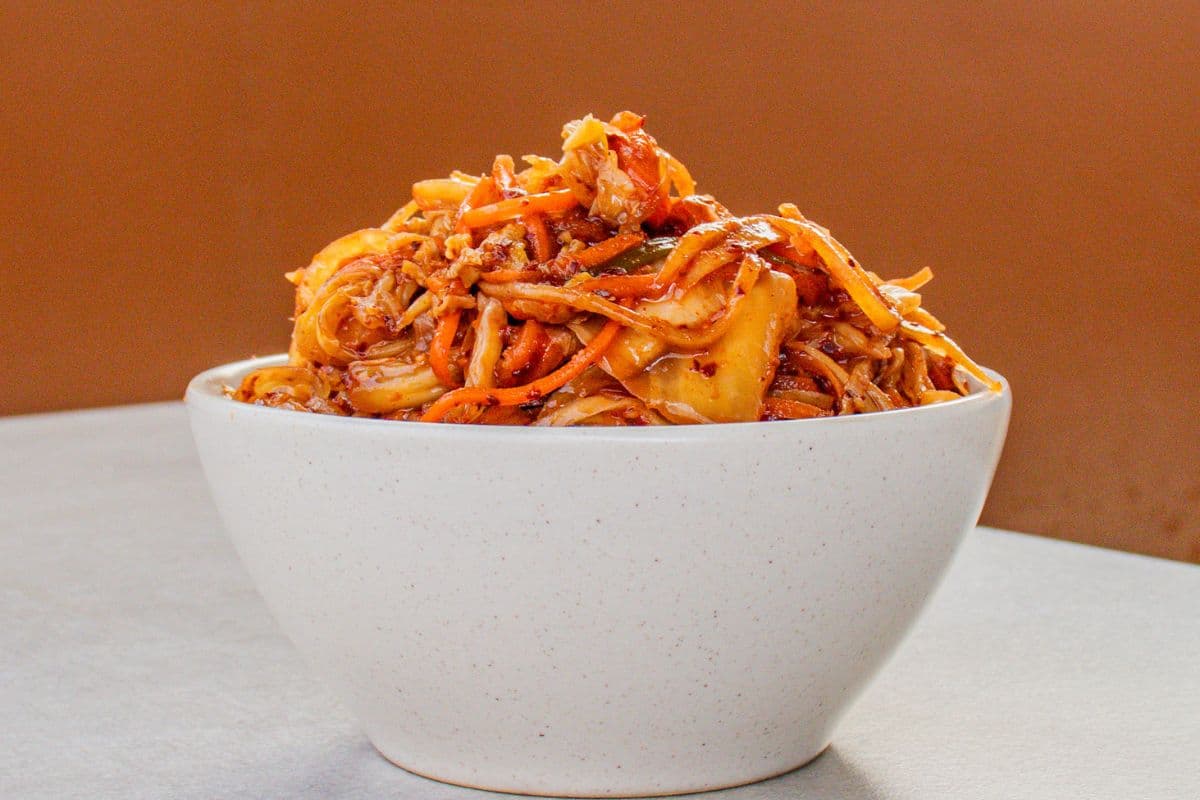
Kimchi and gut health
As a fermented food, kimchi is a powerhouse of gut-friendly nutrients. It's rich in probiotics like Lactobacillus, which help maintain a balanced gut microbiota, crucial for digestion, nutrient absorption, and overall well-being. The dietary fiber in vegetables like cabbage, radish, and carrots further supports gut health by promoting regular bowel movements and feeding beneficial bacteria.
Garlic and ginger, key ingredients in kimchi, offer natural anti-inflammatory properties, soothing the gut and reducing symptoms of digestive discomfort. Research has shown that regular kimchi consumption enhances gut microbiota diversity, which plays a vital role in overall health, including improved immunity, metabolic function, and mental well-being.
By incorporating vegan kimchi into your diet, you're not only enjoying its bold, tangy flavors but also supporting your gut and overall health in a truly delicious way.
Equipment you will need
- Weighing scales
- Chopping board
- Chefs knife
- Peeler
- Gloves
- Glass jars or airtight containers
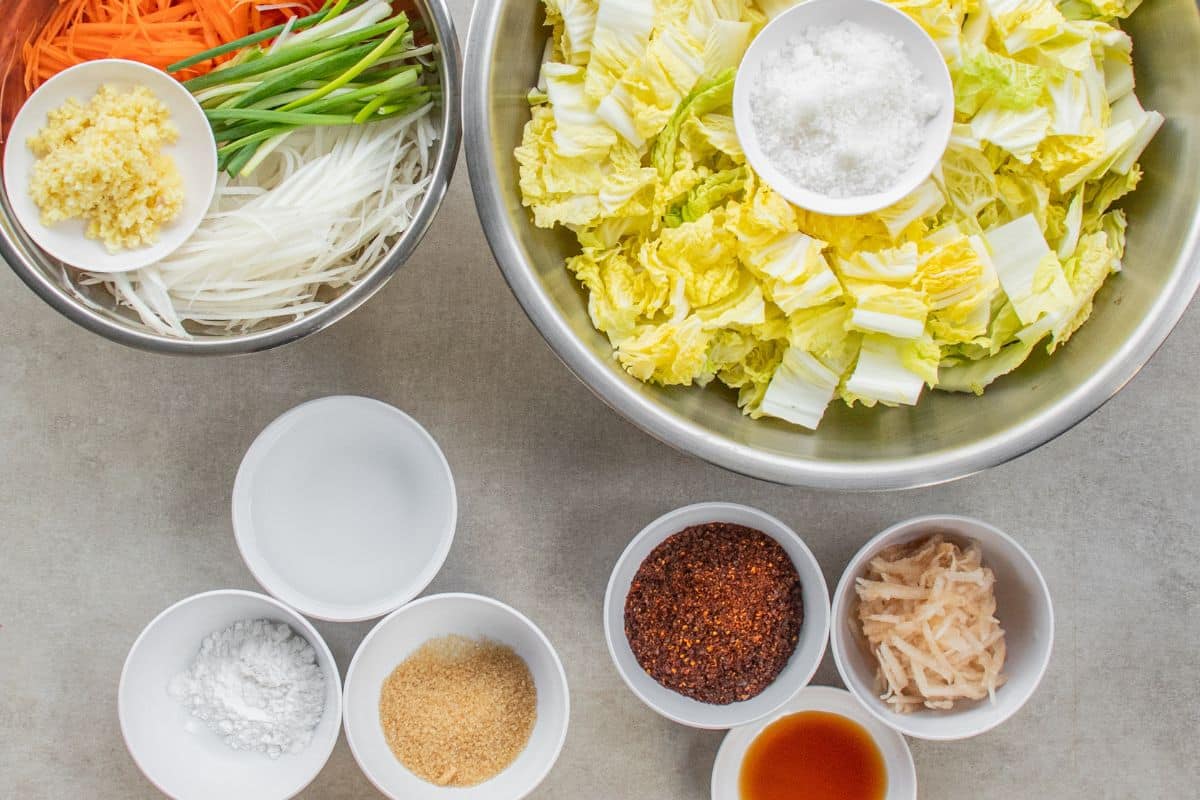
Ingredients you will need
Vegetables & Salt
- Napa cabbage
- Sea salt
- Radish
- Carrot
- Spring onions
- Ginger minced
- Garlic cloves
Rice Paste
- Rice flour
- Water
- Brown sugar
Marinade
- Tamari for gluten-free kimchi
- Kimchi chili flakes
- Asian pear
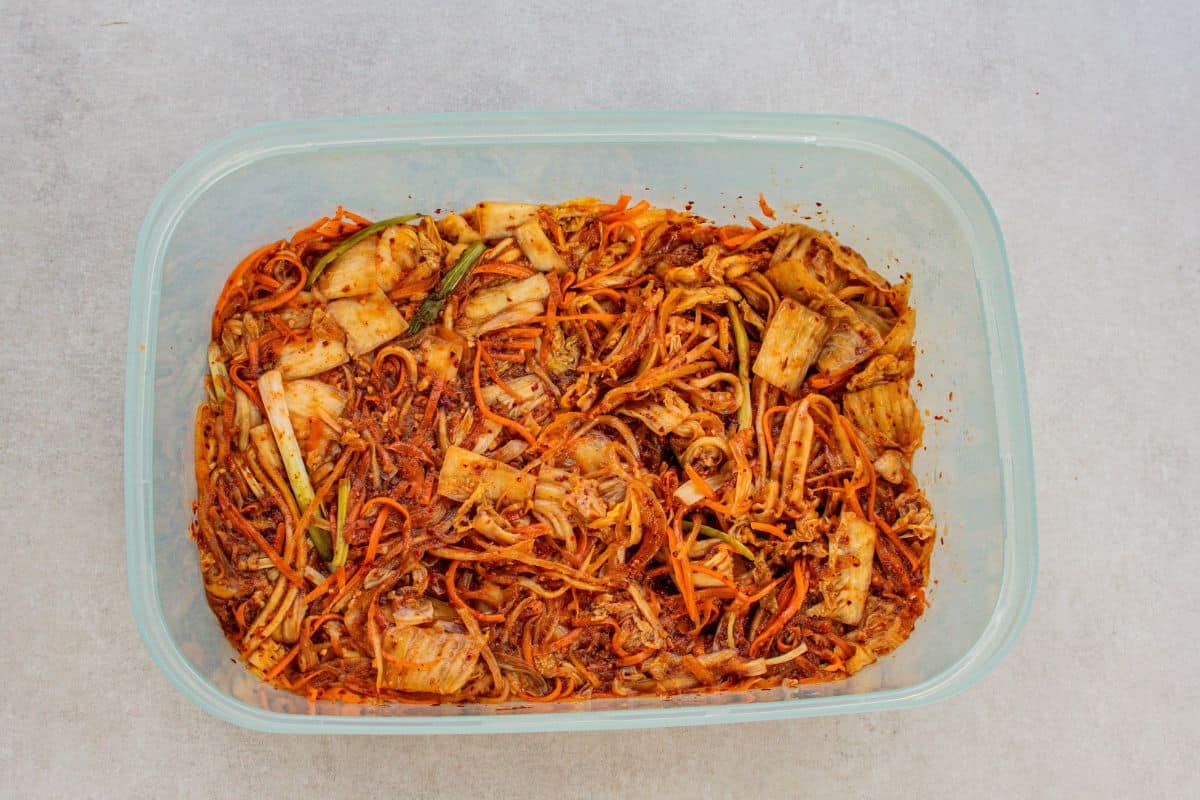
How to make vegan kimchi
Here is our step-by-step guide to making kimchi at home.
Prepare the cabbage

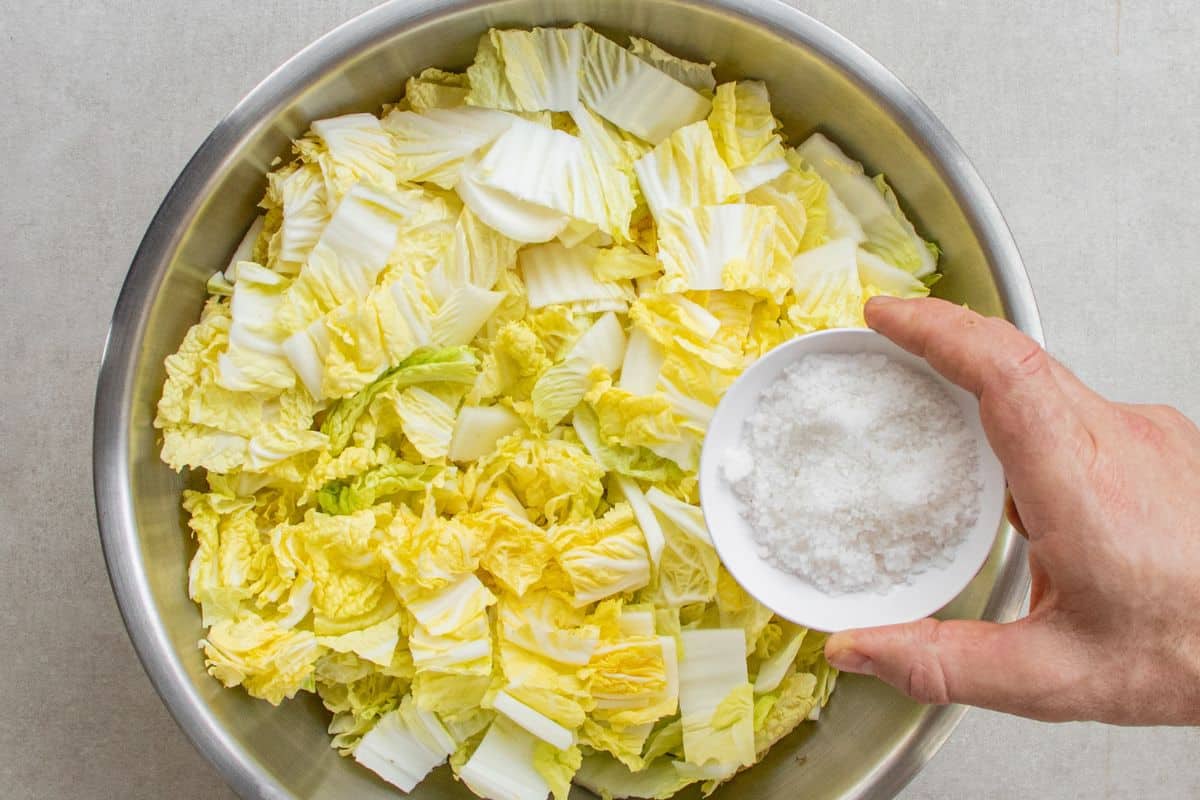
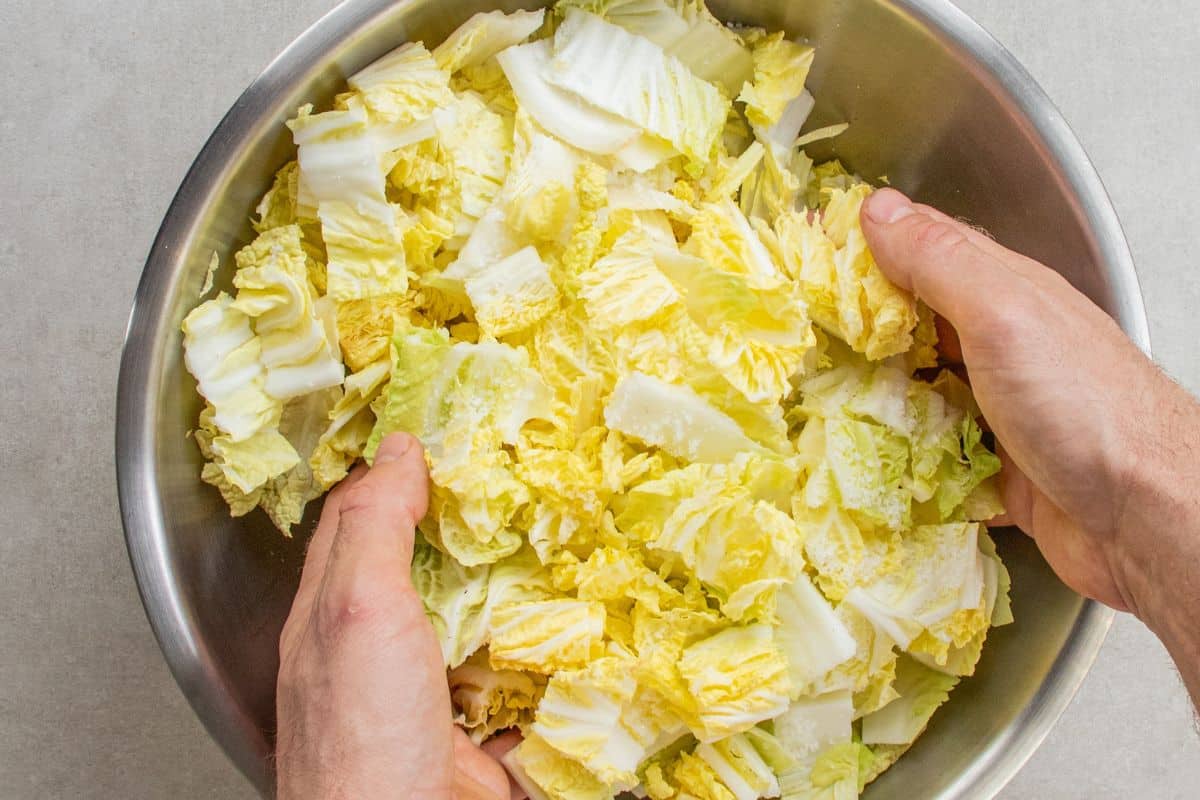
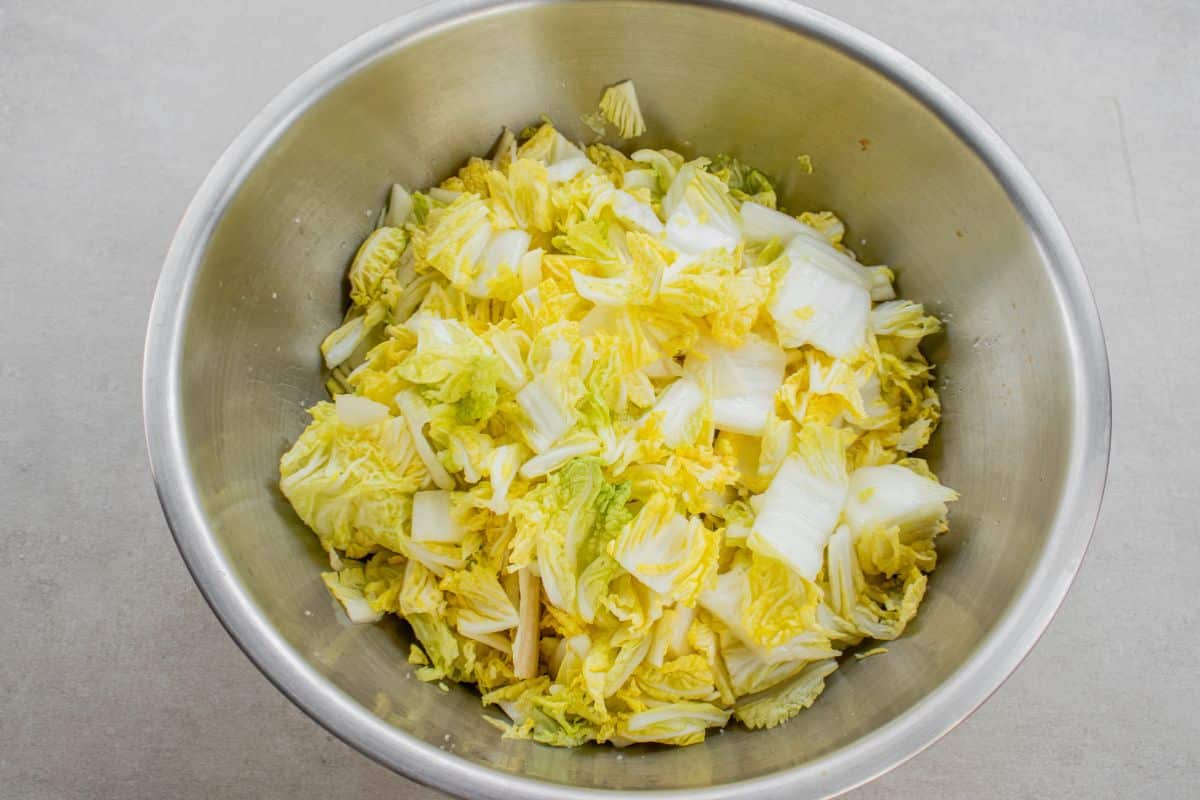
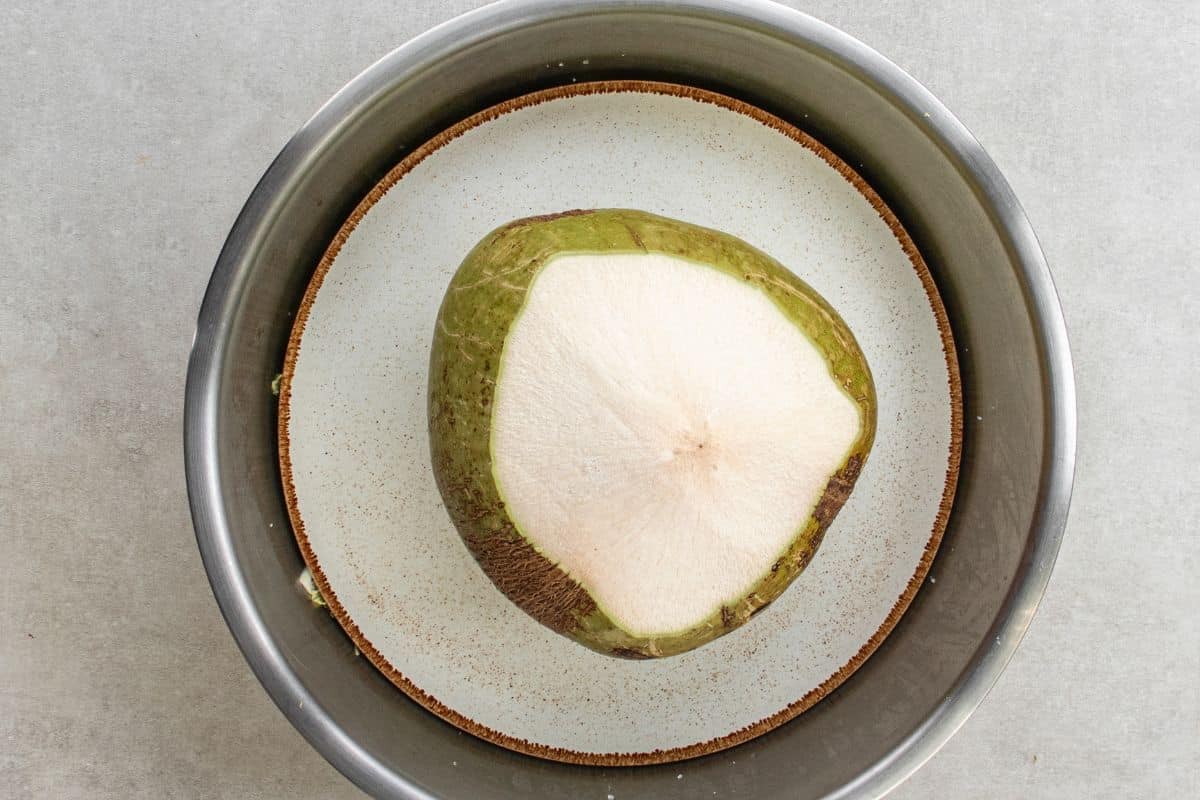

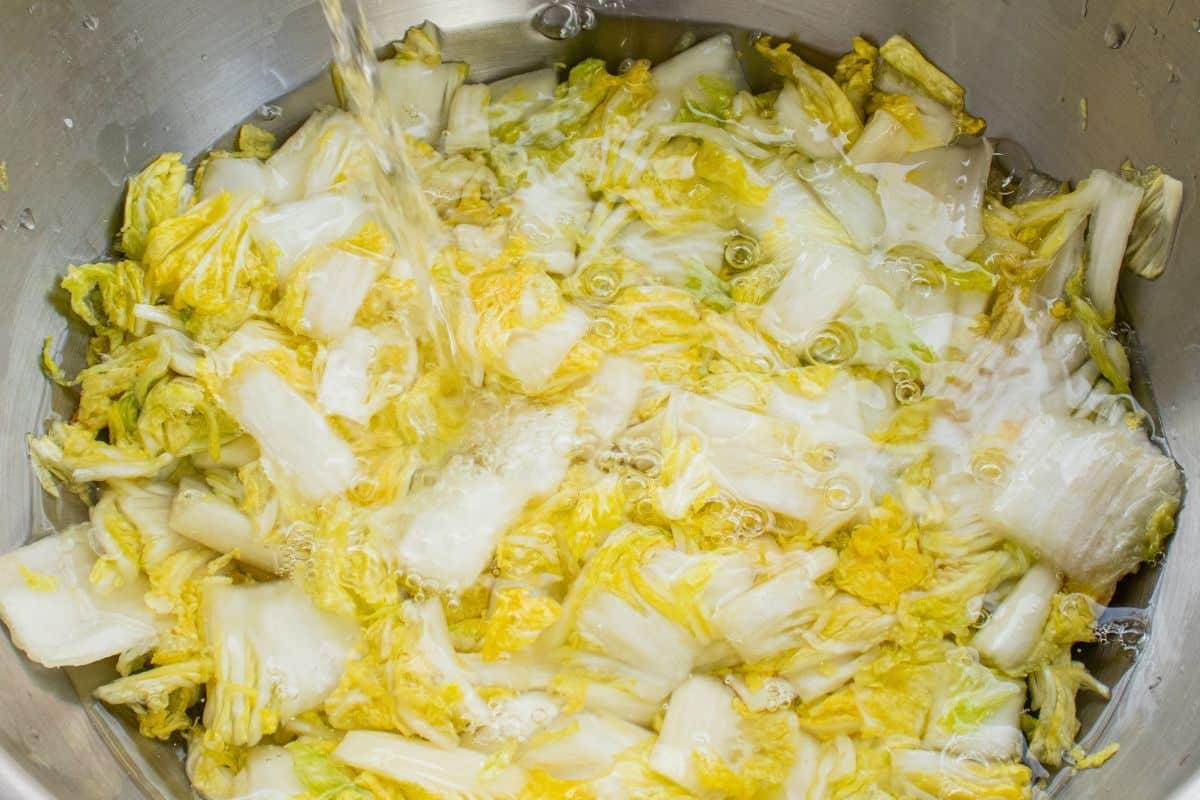
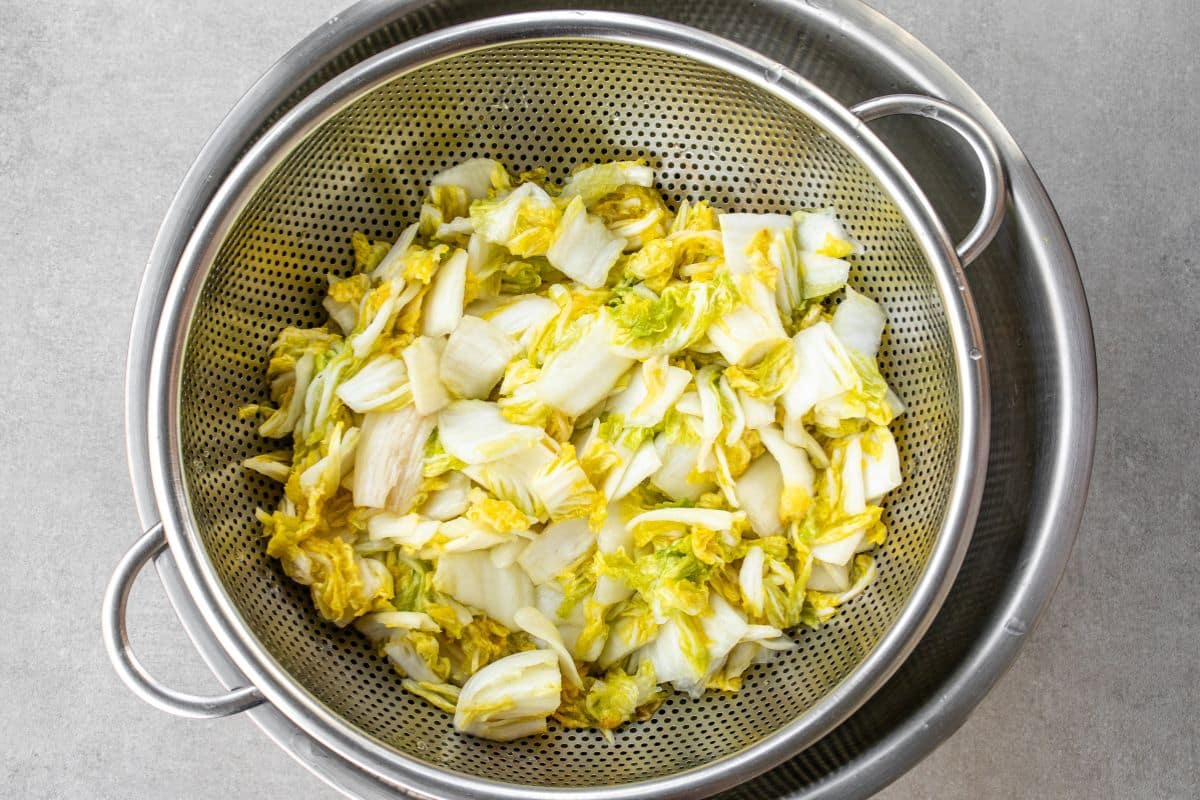
Prepare the vegetables

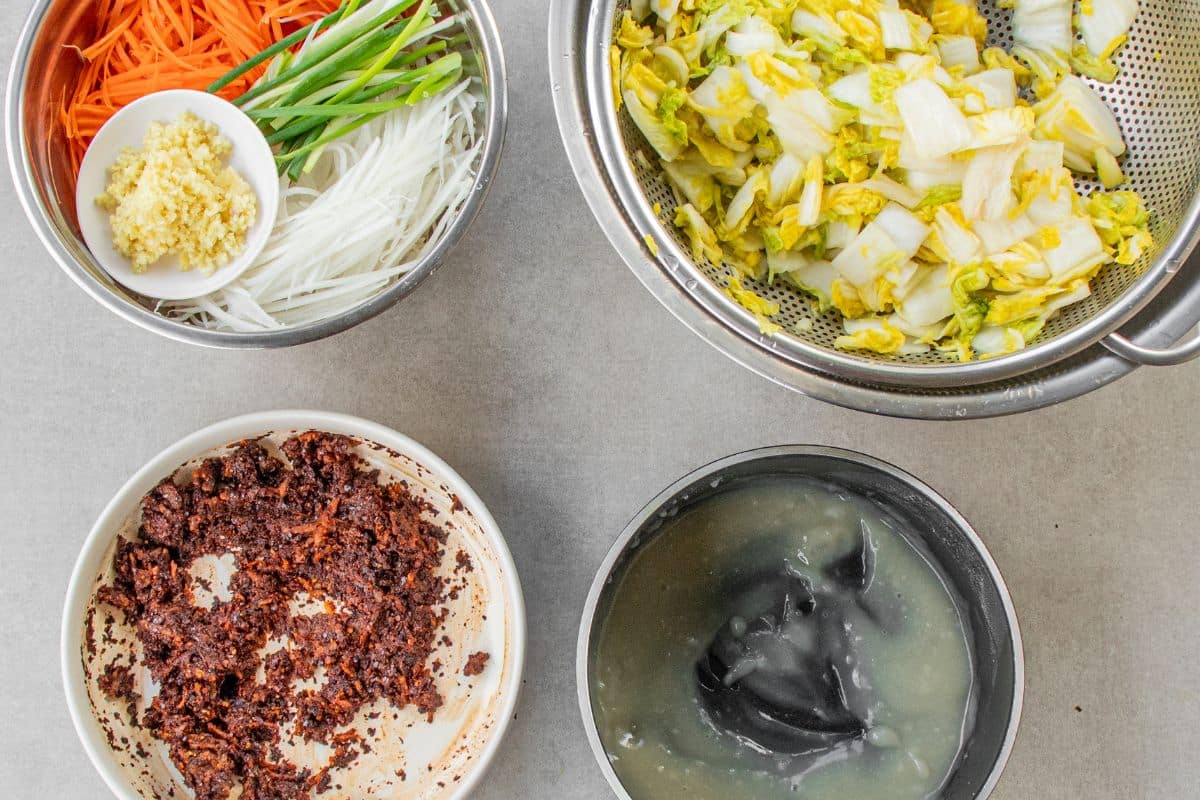
Make the rice paste
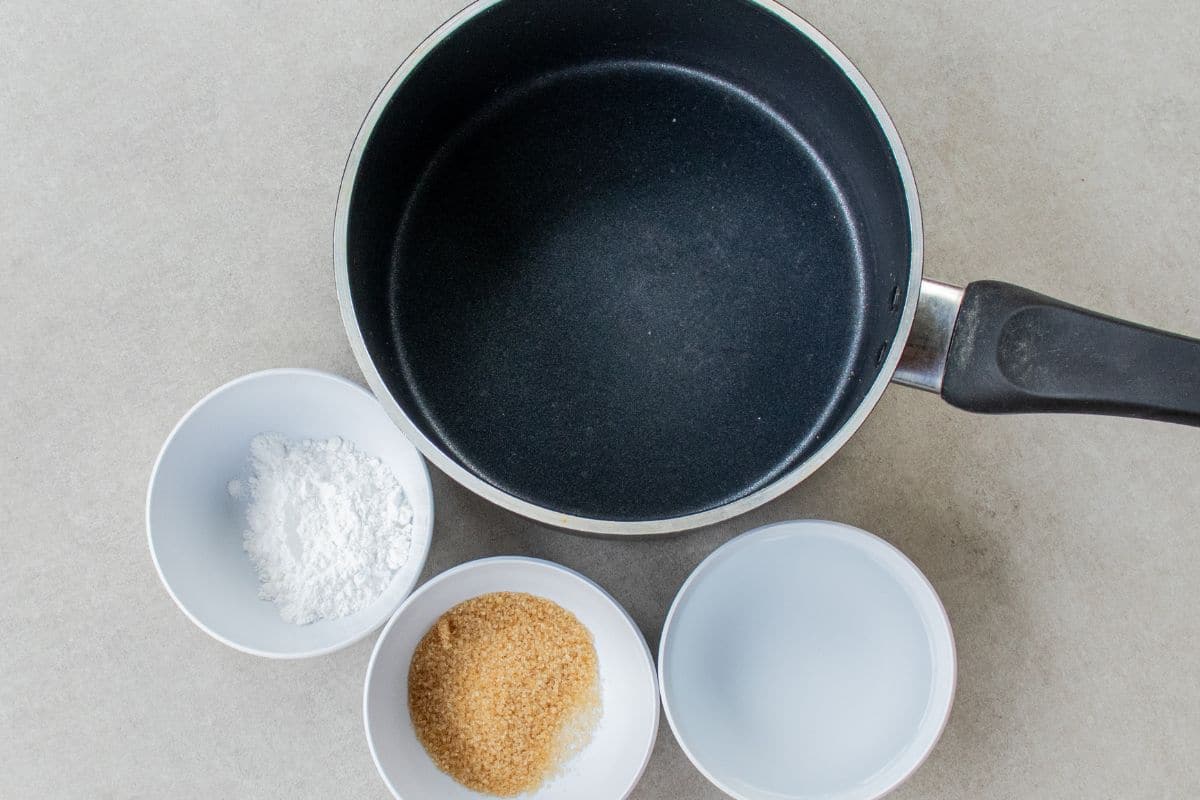
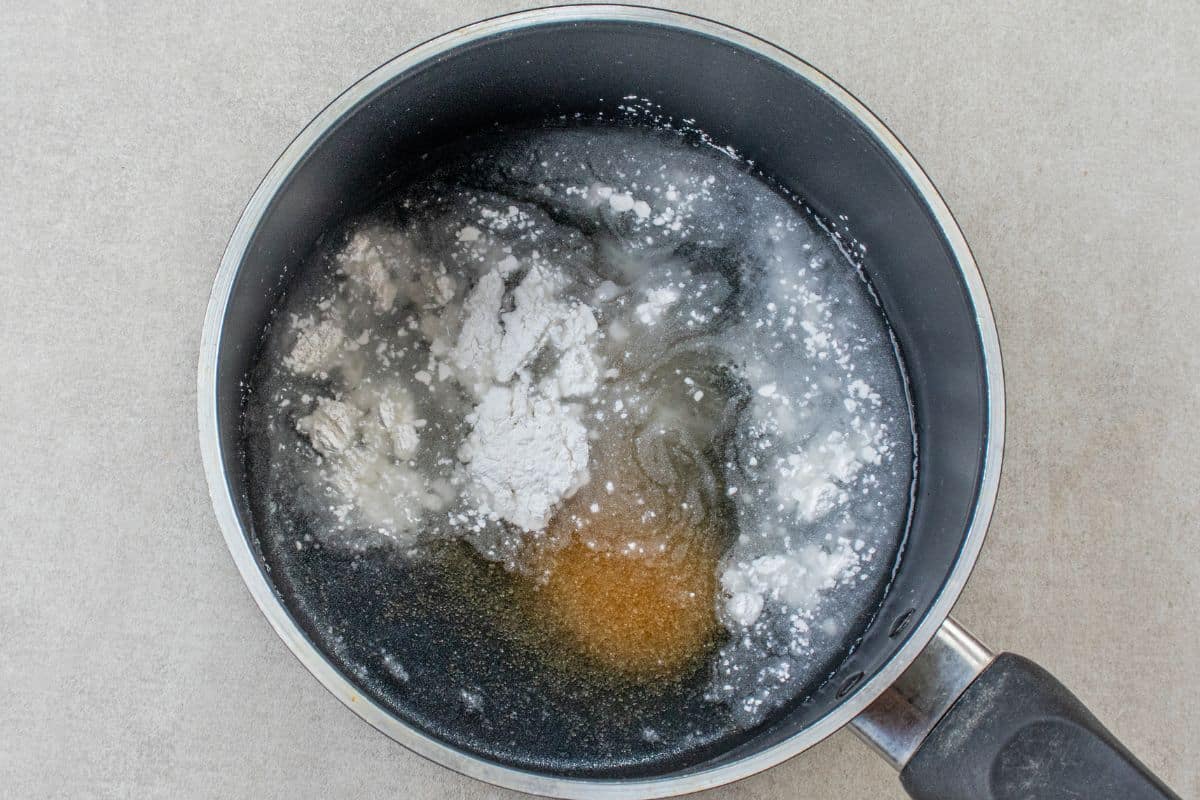

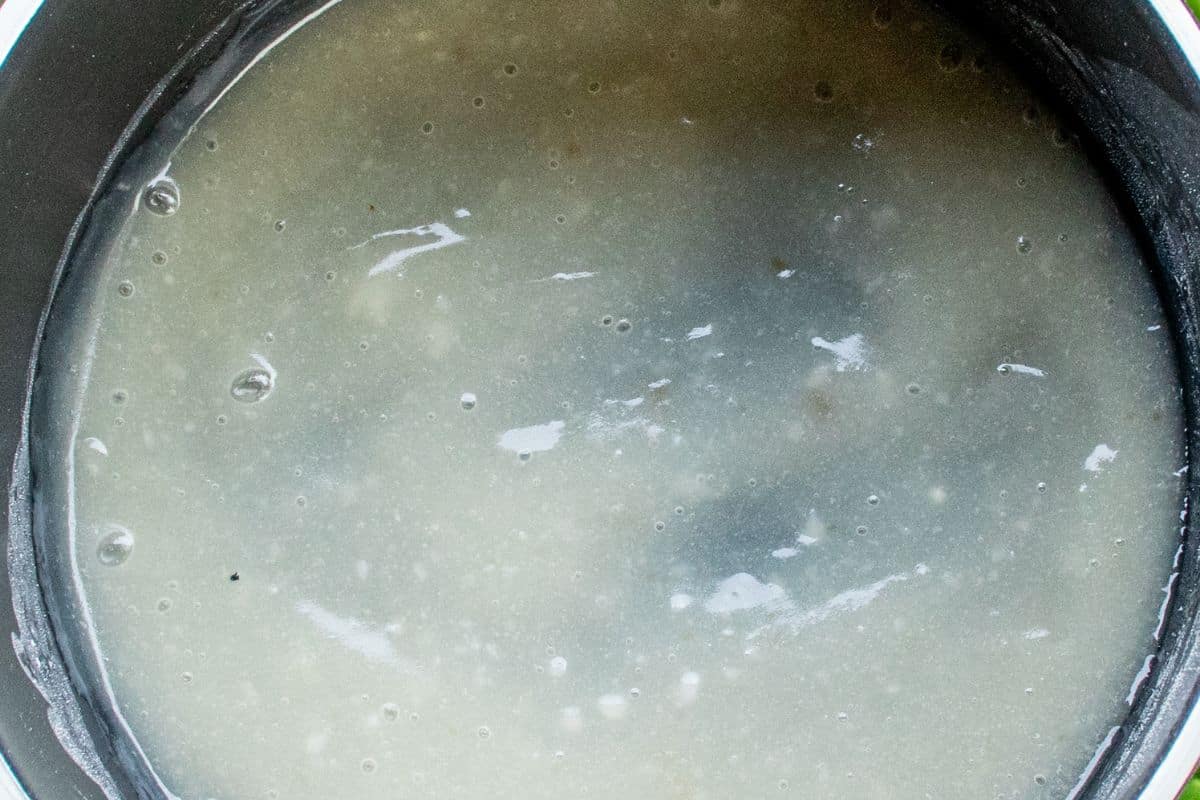
Make the marinade
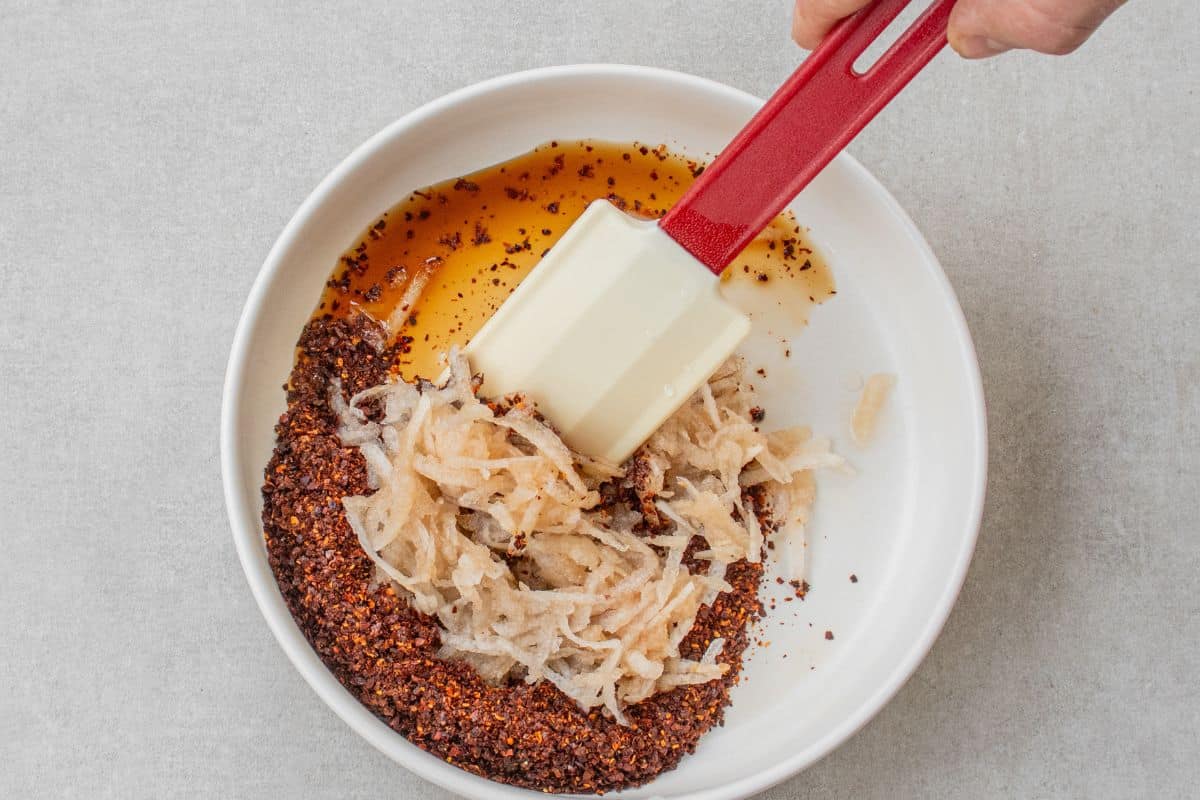
In a large mixing bowl, combine the tamari, kimchi chili flakes, and grated Asian pear
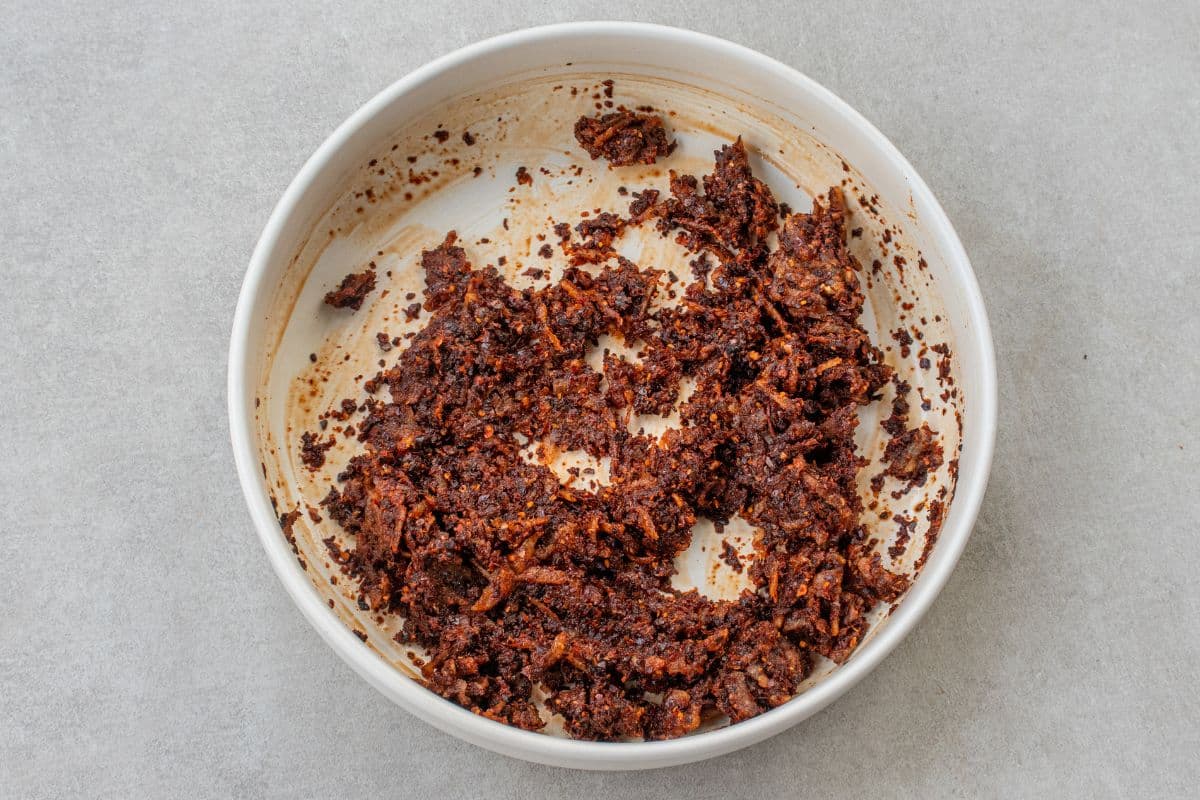
Mix well to form a smooth marinade
Mix the vegan kimchi
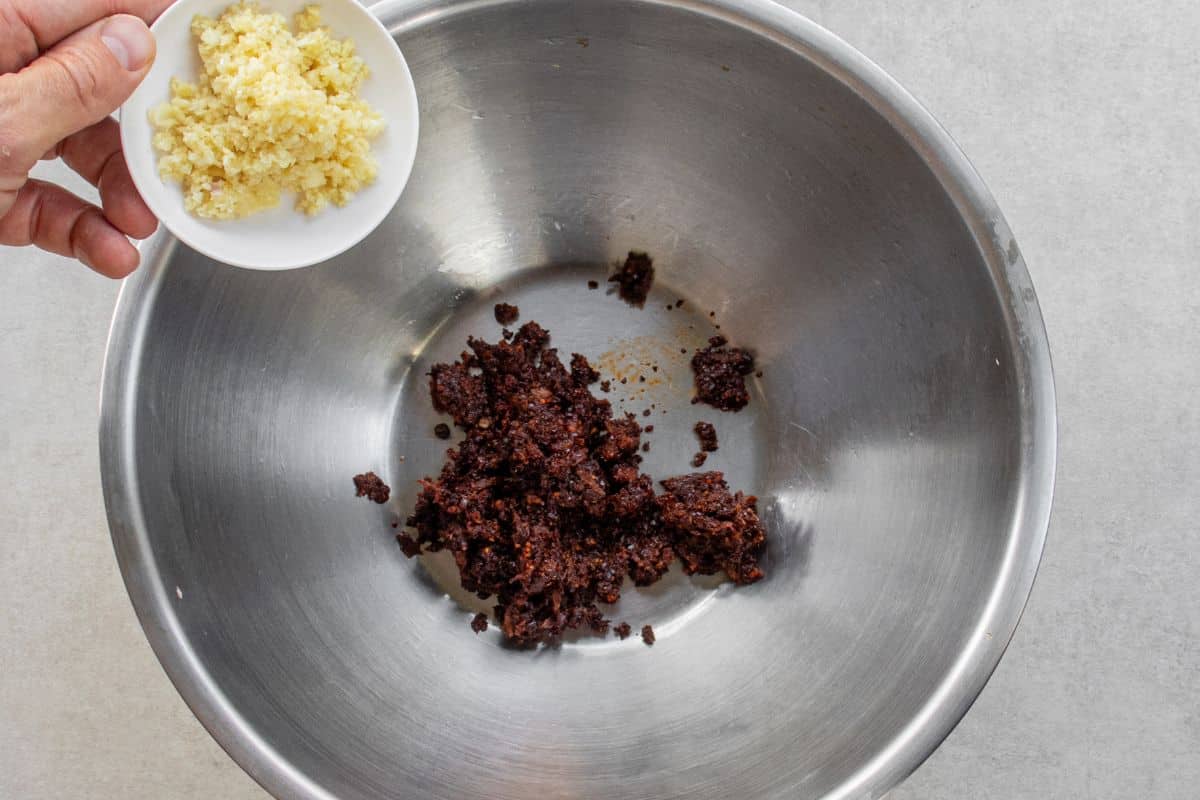
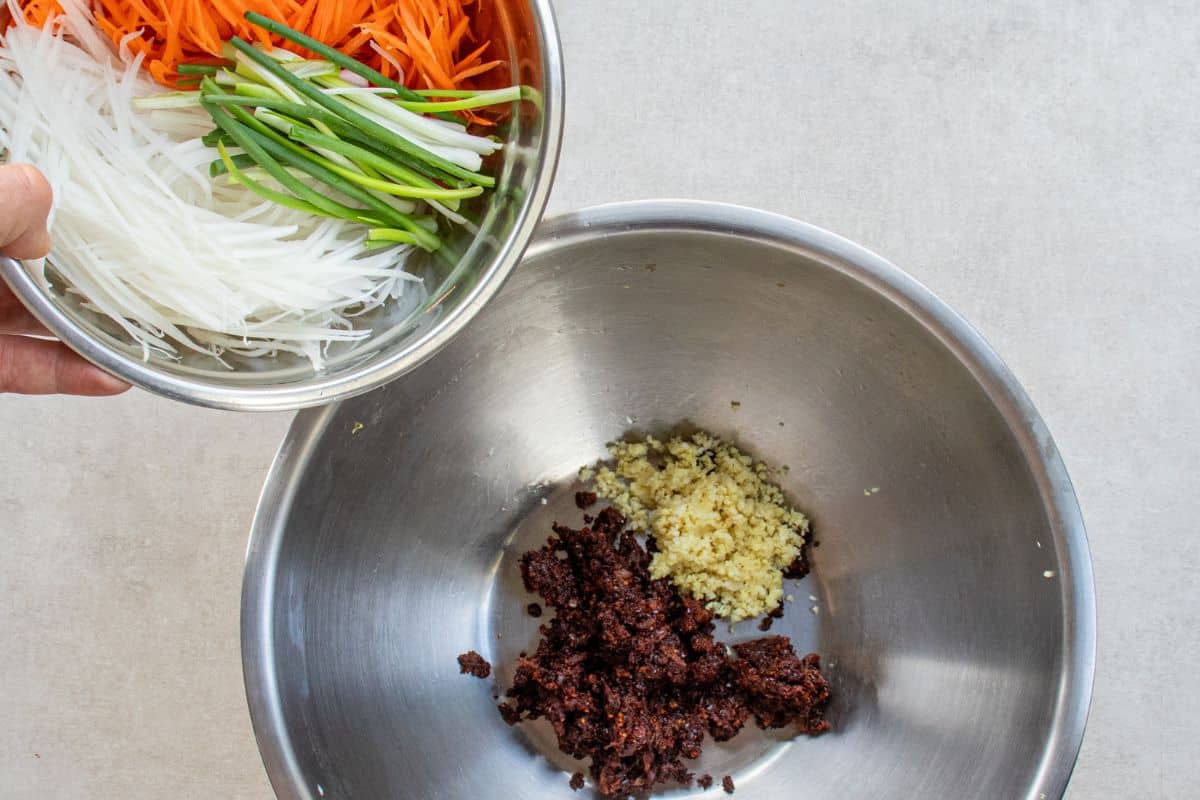
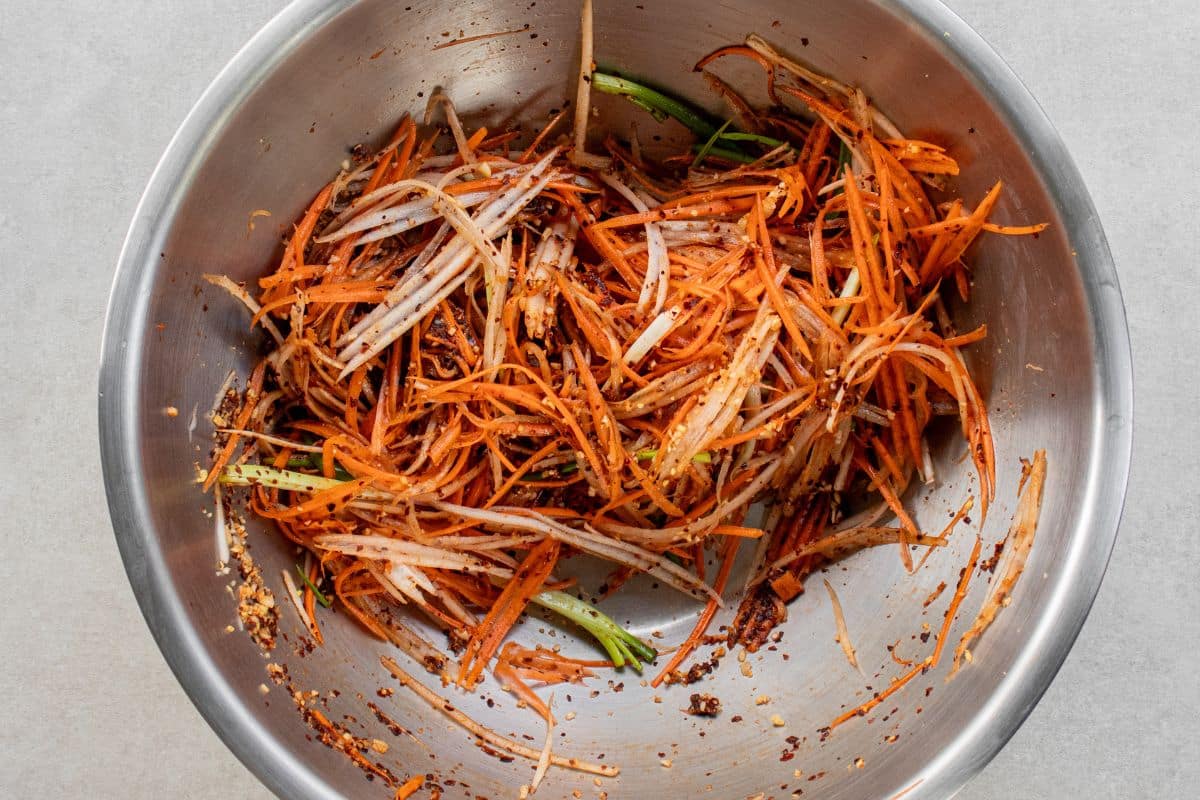
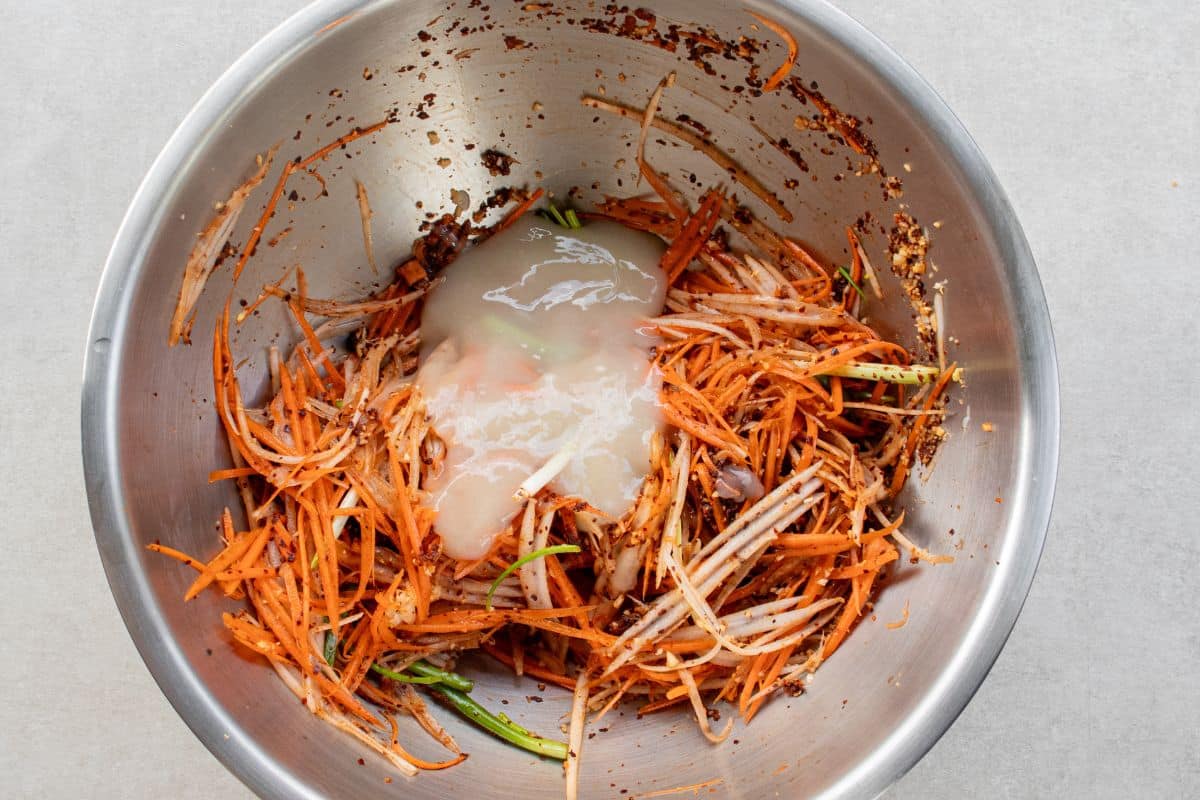
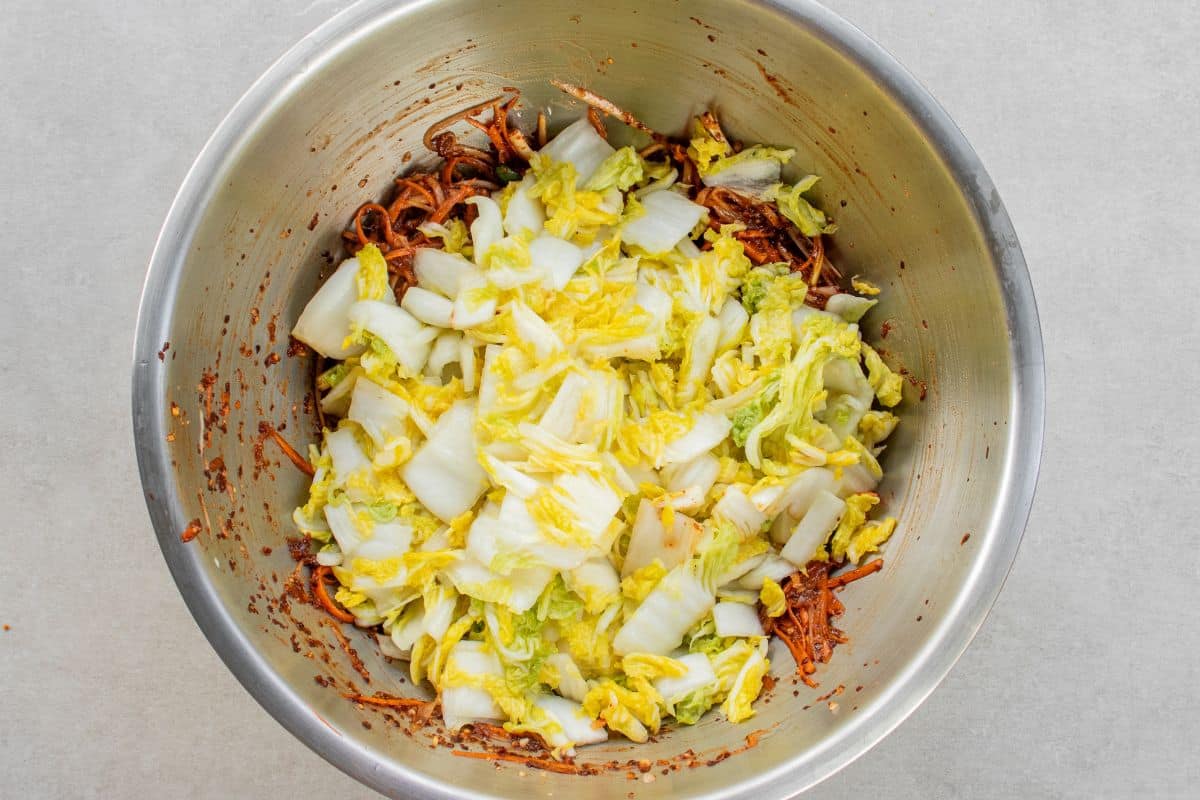
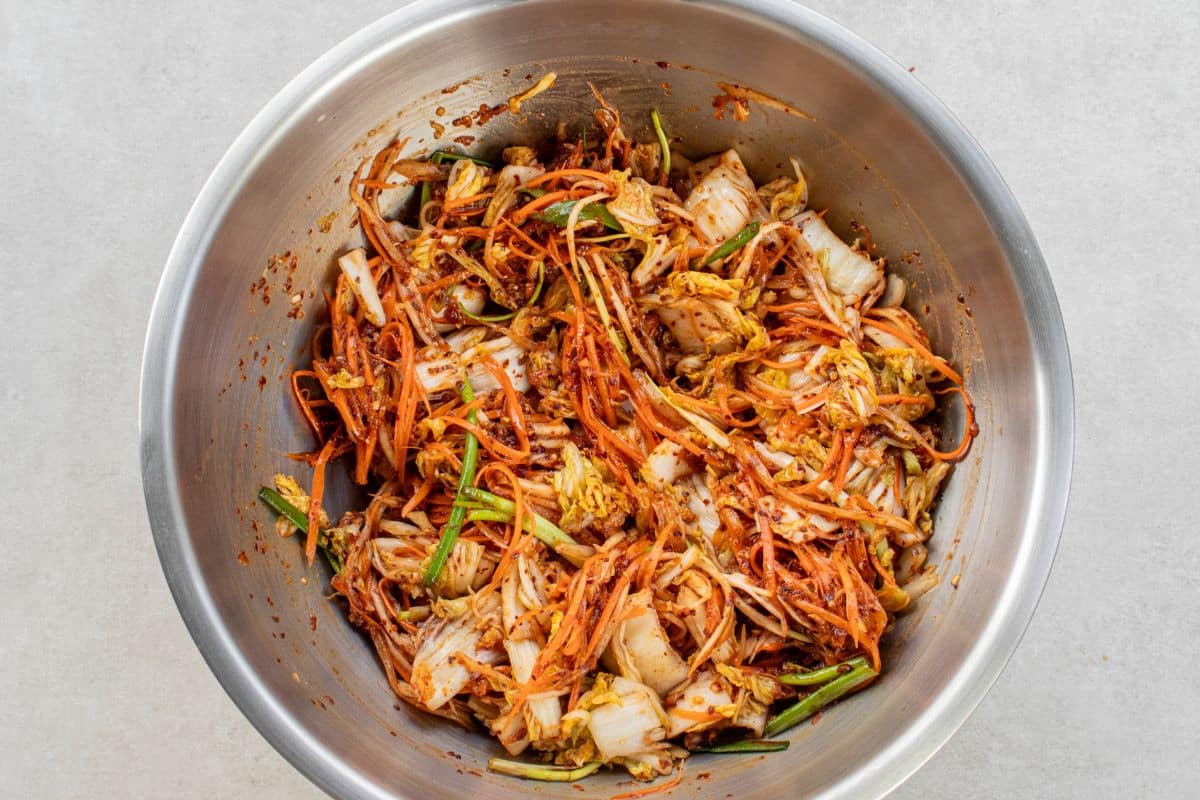
Ferment the Kimchi


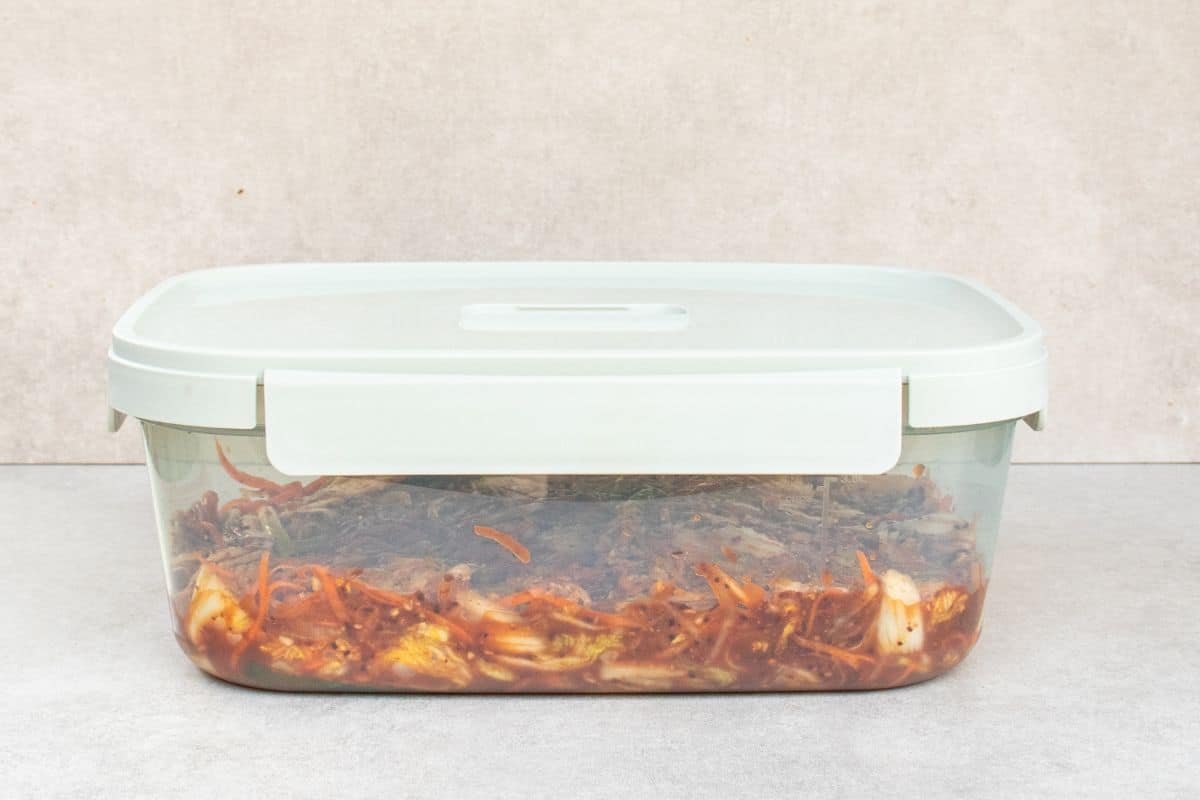
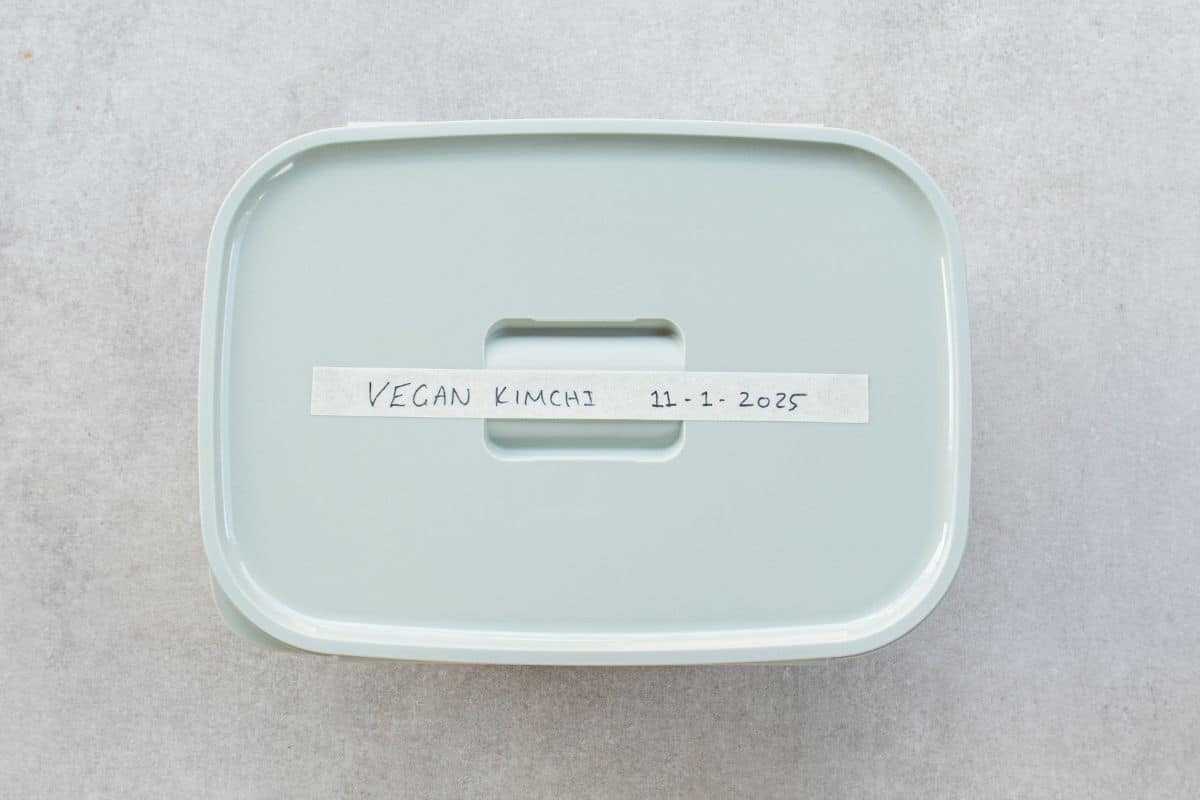
Transfer the container to the fridge to ferment for an additional 3-5 days, or until it reaches your desired flavor.
Serve and Store

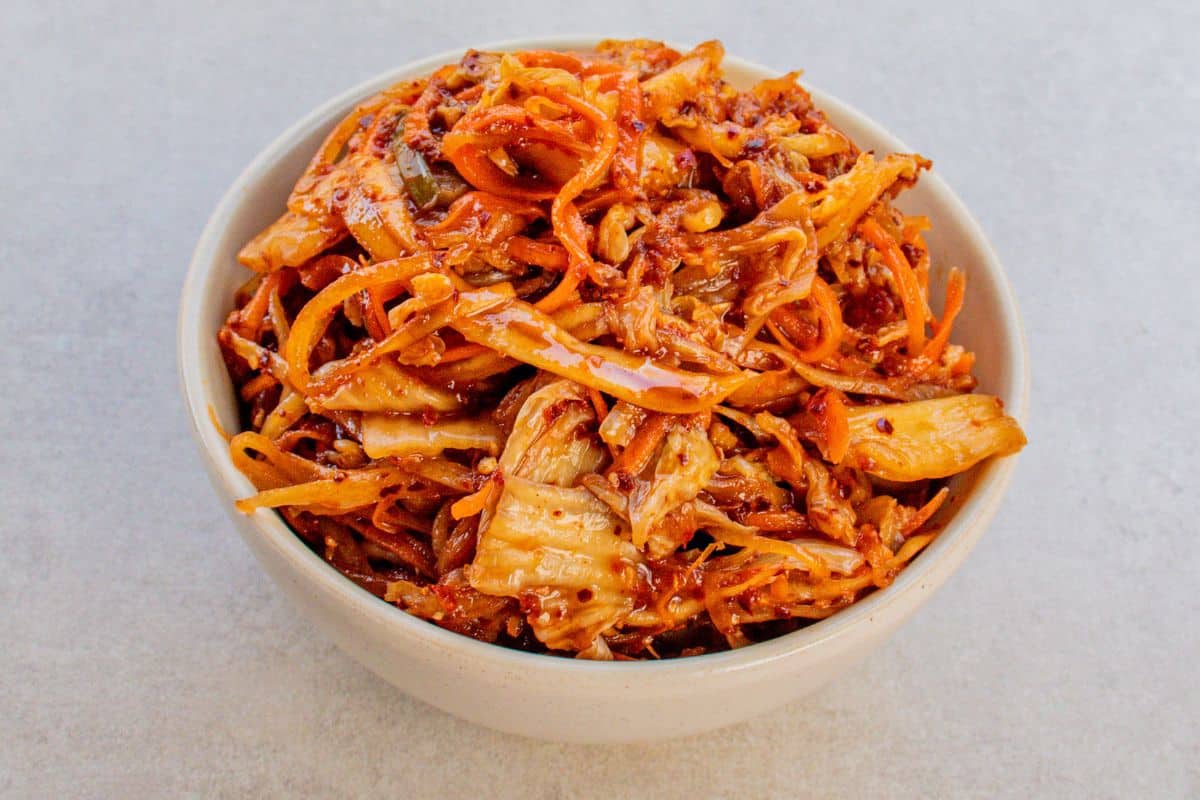
Store the kimchi in the fridge, where it will continue to ferment slowly and can last for several months.
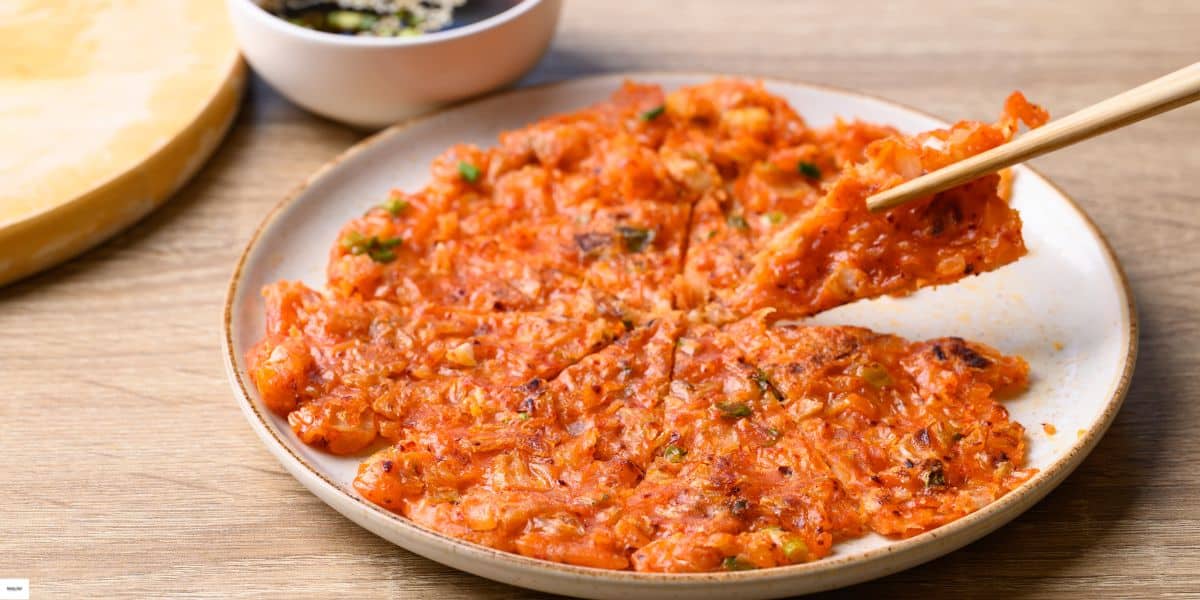
Recipe variations for vegan kimchi
Kimchi can be used as an ingredient in other recipes. Here are some ideas for incorporating kimchi into various recipes:
- Kimchi Fried Rice: Add chopped kimchi to cooked rice along with diced vegetables and stir-fry until heated through. For extra flavor, drizzle with tamari or sesame oil and top with sliced spring onions.
- Kimchi Tacos: Fill tortillas with cooked mushrooms or tofu, then add sliced kimchi and your favorite taco toppings like avocado, coriander, and a squeeze of lime for a tangy kick.
- Kimchi Stir-Fry: Stir-fry sliced vegetables and your protein of choice (like tofu, tempeh, or seitan) with a spoonful of chopped kimchi for an umami-packed dish. Finish with sesame seeds for texture.
- Kimchi Soup: Add chopped kimchi to a pot of soup along with vegetables, noodles, and broth for a bold, spicy, and comforting meal. Include tofu or beans for added protein.
- Kimchi Pancakes: Mix chopped kimchi into a simple batter of flour, water, and a pinch of salt, then pan-fry until crispy and golden. Serve with a dipping sauce made from tamari, rice vinegar, and sesame oil for an irresistible snack or appetizer.
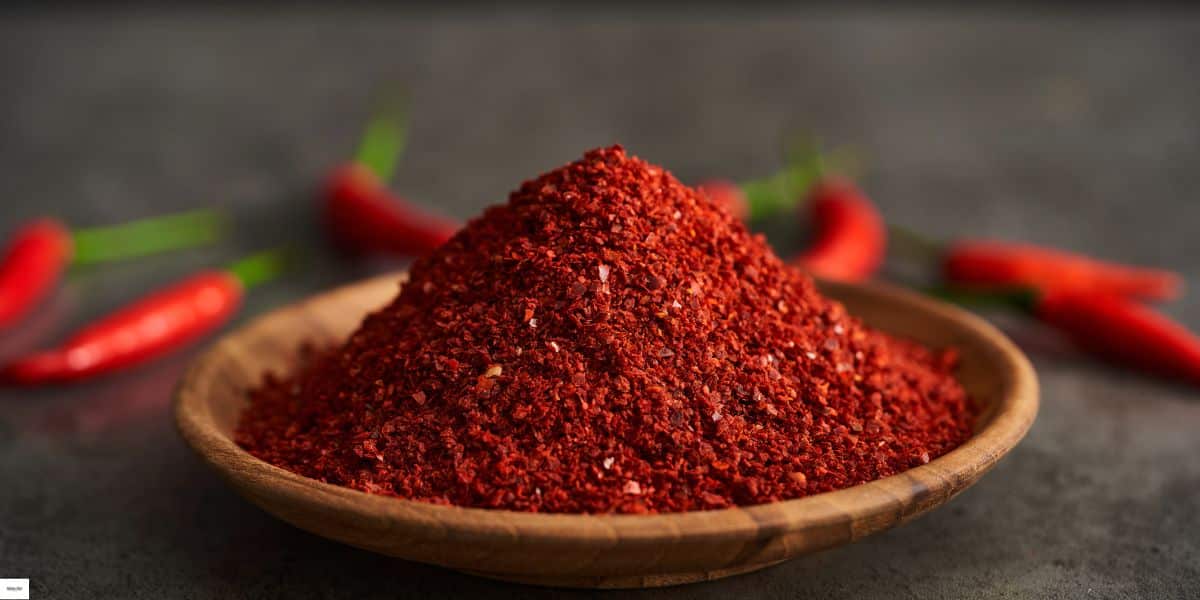
FAQ
The best chili powder for kimchi is gochugaru, a Korean red chili powder or flakes that provides the perfect balance of heat, sweetness, and vibrant color. If gochugaru isn't available, you can use mild red chili flakes or a mix of paprika and cayenne pepper, but the flavor profile may differ slightly.
The most common type of cabbage used for kimchi is napa cabbage, also known as Chinese cabbage. Its tender leaves and mild flavor make it ideal for fermentation. However, you can also experiment with other varieties, such as savoy cabbage or green cabbage, for a unique twist.
Absolutely! While traditional kimchi features napa cabbage and radish, you can experiment with other vegetables like bok choy, kale, daikon, or even carrots. Adding seasonal or locally available produce is a great way to personalize your kimchi.
Kimchi fermentation time depends on your taste preference and storage temperature. At room temperature, ferment it for 1-2 days for a milder flavor, or up to 5 days for a tangier, more developed taste. Once it reaches your desired flavor, transfer it to the fridge, where it will continue to ferment slowly and stay fresh for several months
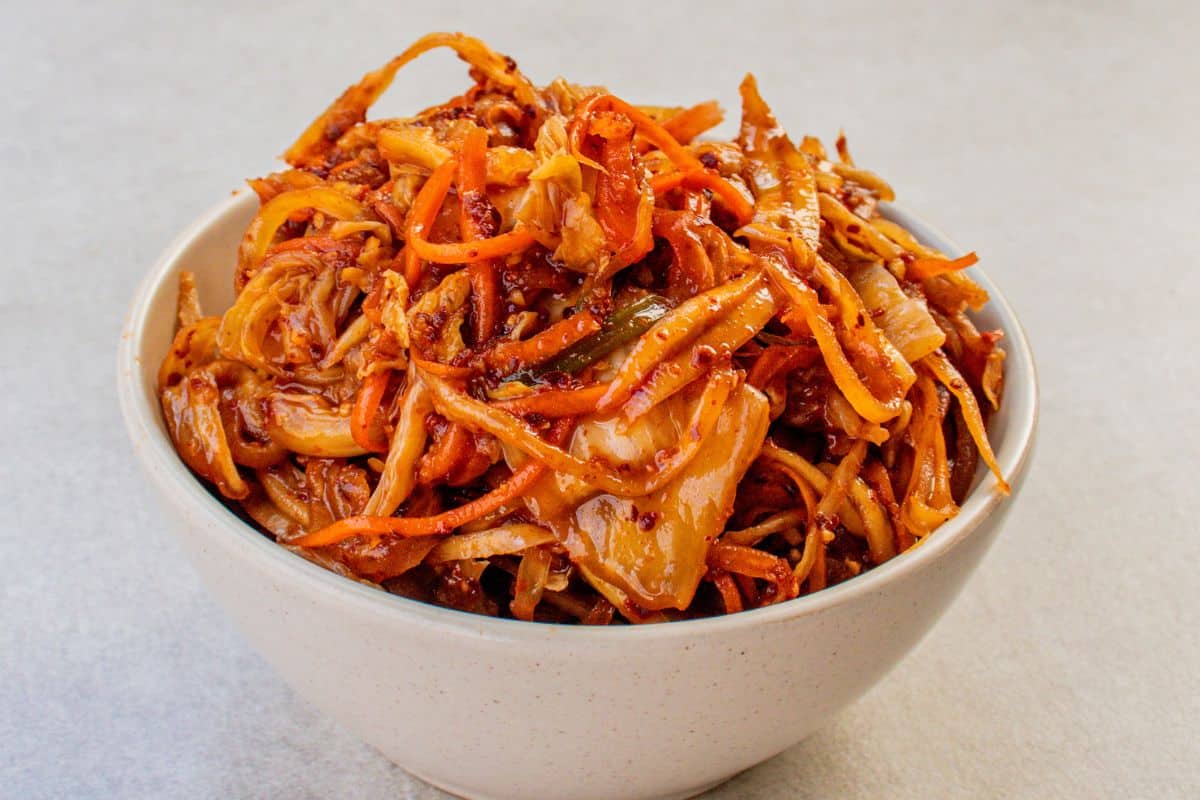
More fermented recipes to try
We hope you enjoy this delicious recipe. If you give it a try, let us know in the comments below - we love hearing your feedback and seeing your recreations.
📋 Recipe



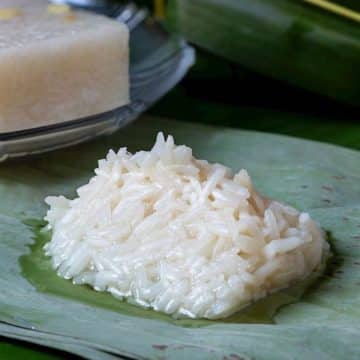



Jamie Raftery says
Great recipe, thanks for the detailed instructions